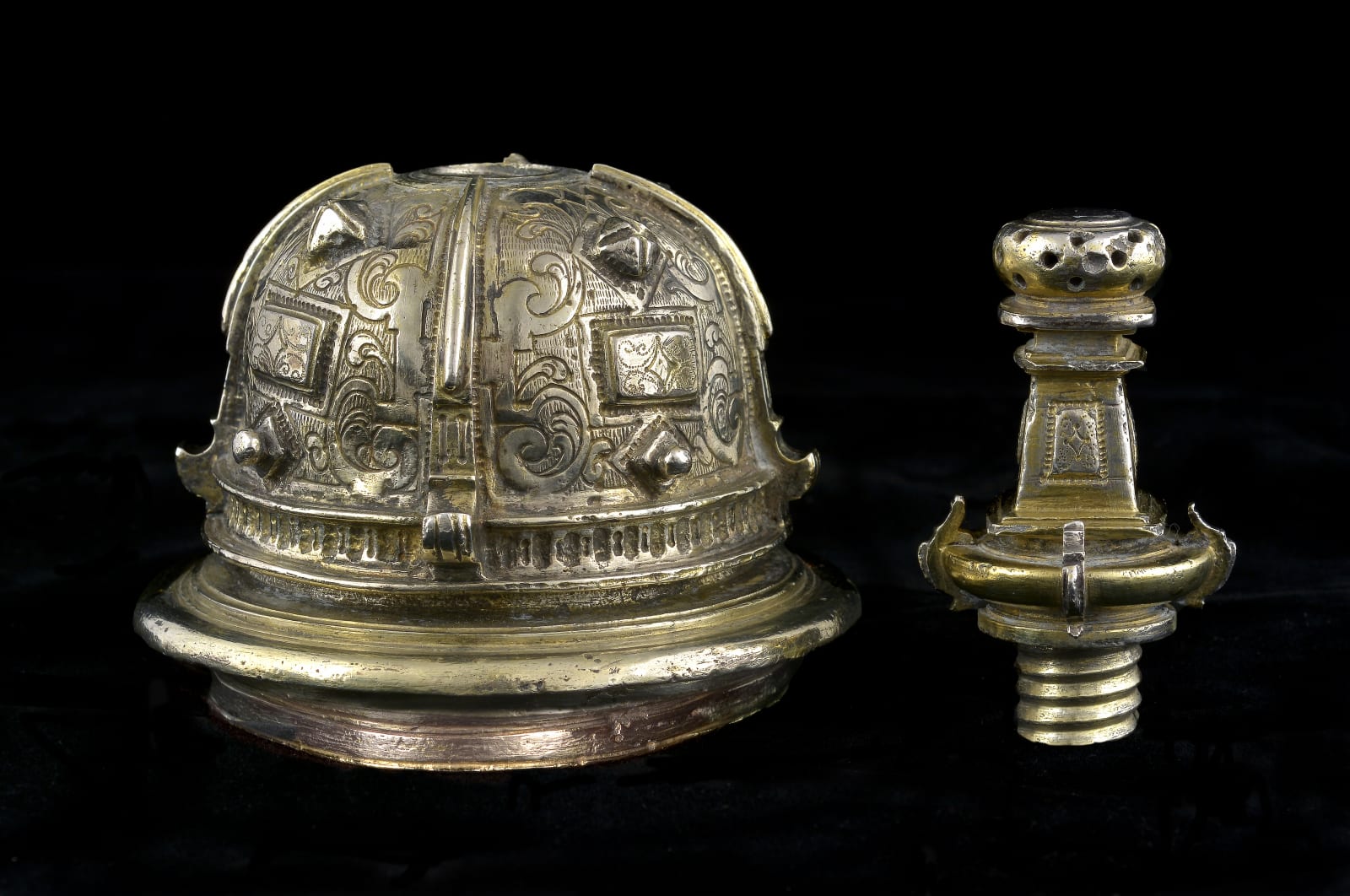SALT CELLAR
Unidentified artist, Viceroyalty Of Peru, No later than 1622
Silver-gilt; cast, turned, engraved, finely punched with dots and slightly raised in relief.
Height 31 cm.
Maximum width of the base 17.5 cm.
Weight 2.457 kg.
Maximum width of the base 17.5 cm.
Weight 2.457 kg.
Further images
Provenance
Recovered from the shipwrecked Spanish Galleon Nuestra Señora de Atocha.
Mark repeated twice at the base of the cylindrical body ¨royal crown inside a pearled circle¨. Gabriel José de Ovalle, active in Mexico during the first half of U the...
Mark repeated twice at the base of the cylindrical body ¨royal crown inside a pearled circle¨.
Gabriel José de Ovalle, active in Mexico during the first half of U the 18th century, was a "passionate popular painter”48 to whom the Historiography of Viceroyalty Art has not devoted the depth of study he deserves. His, as was also the case for so many of his contemporaries, was an example of a painter immersed in an artistic environment where practically all that was asked of him was a correct iconographic approach, above and beyond aesthetic verisimilitude or technical prowess. The function of art in the context of the Council of Trent resided in transmitting the Counter-Reformation message, highlighting art's didactic capacities and largely dismissing the painter's imagination and creative capabilities.
1
of
4







